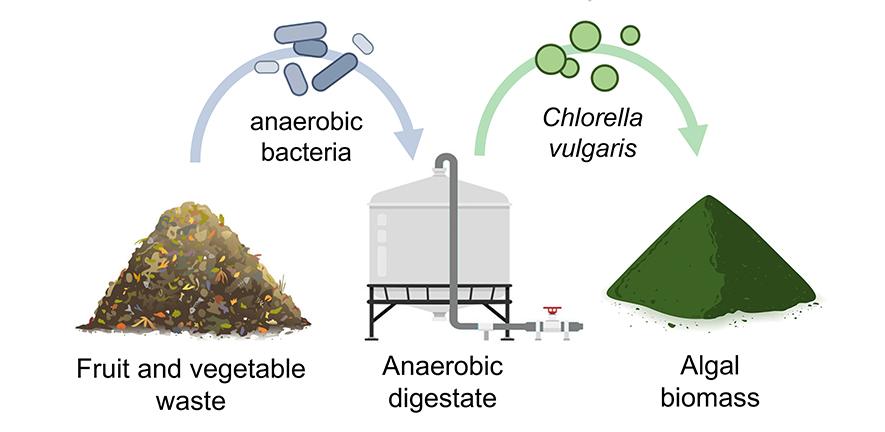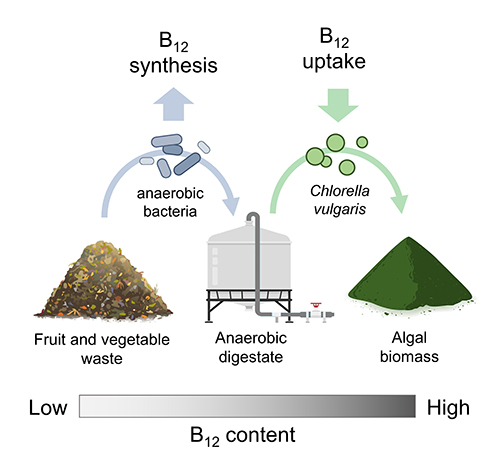
Submitted by Anonymous on Fri, 08/12/2023 - 14:16
Vitamin B12-containing algae boosts fertiliser digestate potential
Anaerobic digestion is a process widely used to convert organic waste into biogas (methane), and is a key facilitator of the circular economy. After gas production, the residue that remains is full of nutrients including degraded organic substances, plus ammonia, phosphate and other salts. This ‘digestate’ is almost exclusively used as a fertiliser, but its other possible uses have not received much research attention.
A study by the Algal Innovation Centre team has shown that digestate contains high levels of vitamin B12, so when it is used as a nutrient source to grow Chlorella vulgaris microalgae, the algal cells absorb the vitamin it contains. The Chlorella can then be processed for use as a high-value feed ingredient in aquaculture, where a predominantly plant-based, B12-deficient diet is used to meet the increasing demands of the industry.
The digestate stemmed from anaerobic digestion of fruit and vegetable waste, which contains no B12, as plants neither produce nor need B12. Instead the team discovered that the B12 they found was synthesised in situ by the waste-digesting bacteria (of the Proteobacteria, Firmicutes and Bacteriodota taxonomic families) that convert the waste into gas and fertiliser.
‘We were pleased to find that fruit and vegetable waste with negligible B12 content could produce digestate with a significant B12 content, which could then be taken up by the algae and after 13 days resulted in 10.6 micrograms B12 per gram of algal dry weight’, said Dr Payam Mehrshahi, who led the project. ‘This is significantly higher than commercially produced Chlorella biomass, which has levels of less than 4.5 micrograms/gram.’
Additionally, the researchers demonstrated that the microalgae were rich in other compounds, including proteins and polyunsaturated fatty acids, the latter being important for fish health. The study thus offers the possibility for using Chlorella grown on digestate as a fish feed supplement.
‘Realising the potential of digestate to contribute to the production of higher-value products than fertiliser in this and other ways will help boost the economic viability of the circular economy. Fertiliser is a low value use, but by using digestate as a basis for other value-added products such as B12-containing Chlorella, we should help enhance the attractiveness of anaerobic digestion as an investment, which will be good both for environmental sustainability and the economy.’ said Dr Mehrshahi.
Read the paper
Vitamin B12 bioaccumulation in Chlorella vulgaris grown on food waste-derived anaerobic digestate. https://doi.org/10.1016/j.algal.2023.103290

